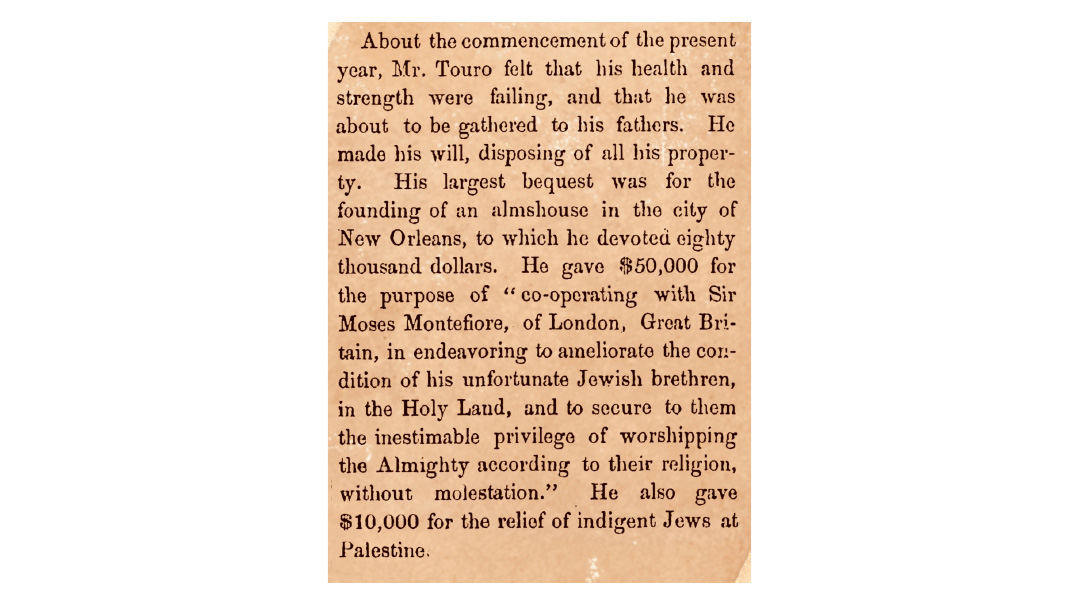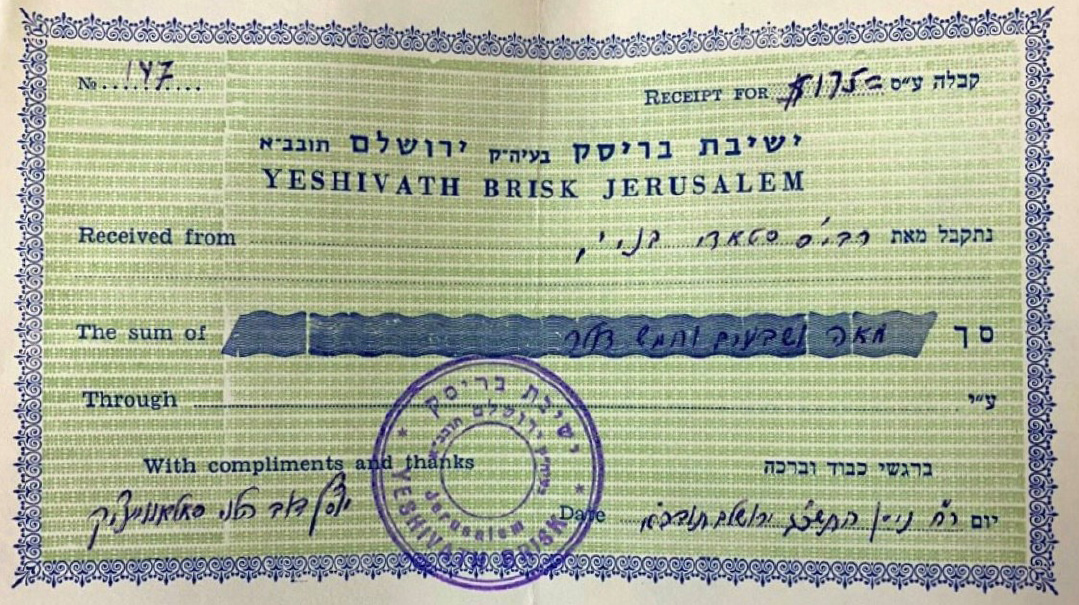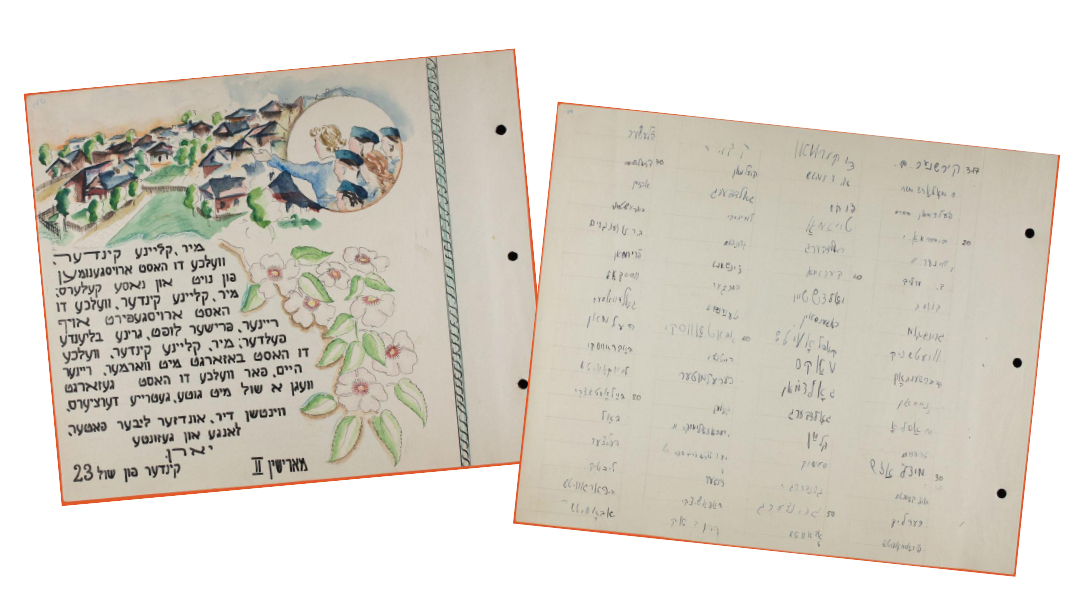Remembering the Rebbes of Radzymin
| July 2, 2024Rav Yaakov Aryeh Guterman of Radzymin (1792–1874) was a student of chassidic masters

Title: Remembering the Rebbes of Radzymin
Location: Radzymin, Poland
Document: Ilustrirte Woch
Time: October 1924
Situated just north of Warsaw, the shtetl of Radzymin was home to over 2,000 Jews, and served as the headquarters of a large Polish chassidic dynasty that was almost completely wiped out during the Holocaust. Rav Yaakov Aryeh Guterman of Radzymin (1792–1874) was a student of chassidic masters including the Chozeh of Lublin, the Maggid of Kozhnitz, the Yid Hakadosh, and Rav Simcha Bunim of Peshis’cha.
Rav Yaakov Aryeh emerged as one of the leaders of Peshis’cha chassidus in central Poland following the passing of Rav Yitzchak of Vorka in 1848. He had been serving as the communal rabbi in Radzymin, and thus founded the dynasty there. After the passing of Rav Menachem Mendel of Kotzk in 1859 and the Chiddushei Harim of Gur in 1866, the Radzyminer Rebbe became the senior Rebbe of the Peshis’cha approach in Poland, and his leadership had a large impact on thousands of chassidim across the region.
Upon Rav Yaakov Aryeh’s passing, he was succeeded by his son Rav Shlomo Yehoshua Dovid, who in turn was succeeded by his son Rav Aharon Menachem Mendel Guterman (1860–1934), a close student of Rav Avraham Borenstein, the Avnei Nezer of Sochatchov; and of Rav Shlomo Zalman Schneerson, Chabad Rebbe of Kapust. Prior to his father’s passing in 1903, Rav Aharon Menachem Mendel enjoyed a successful career in business. For many years he resided in Warsaw, and was a leading advocate for Polish Jewry.
Rav Aharon Menachem Mendel initiated several projects to help Jewish soldiers in the Polish military, Jewish inmates in Polish prisons, and Jewish students in Polish universities. For the latter group he established kosher kitchens in proximity to their campuses. He also headed a Warsaw-based organization called Shomrei Shabbos, making rounds on Friday afternoon to encourage shopkeepers to close their stores for Shabbos. Through his activism he developed relationships with several Polish political leaders, and had a personal audience with the leader of Poland, Marshal Jozef Pilsudski.
In 1911 he established a yeshivah in Radzymin called Orchos Chaim, which quickly rose to prominence in the region. The Rebbe occasionally delivered shiurim. (The rosh yeshivah at Orchos Chaim was Rav Pinchas Menachem Mendel Singer, a renowned talmid chacham and author of many seforim, and also the father of the Nobel laureate author Isaac Bashevis Singer.)
Simchas Torah at Radzymin was legendary; throngs from all over Warsaw would converge on the shtibel for the all-night hakafos. The Rebbe would dance, holding a sefer Torah throughout hakafos, with a seemingly endless reservoir of energy. A respected Torah scholar, he authored nearly 100 Torah works, almost all of which remained in manuscript and were ultimately lost in the Holocaust.
When Rav Aharon Menachem Mendel passed away childless in 1934, he was succeeded by nephews, most of whose families were massacred in the Holocaust.
Another aspect of his renown was his love for Eretz Yisrael. In 1870, the legendary rabbi of Warsaw, Rav Dov Ber Maizlish, passed away. Among his many activities was oversight and fundraising for Kollel Polin in the Old Yishuv. Rav Shlomo Yehoshua David of Radzymin succeeded him in this capacity, and the responsibility for Kollel Polin was ultimately bequeathed to his son, Rav Aharon Menachem Mendel.
In that context, the Radzyminer Rebbe visited the Land of Israel in 1928. In addition to personally attending to Kollel Polin’s needs, he also met with various secular leaders of the Yishuv, such as Tel Aviv mayor Meir Dizengoff and poet Chaim Nachman Bialik.
One of the Rebbe’s initiatives on this visit was to have ominous repercussions for the Jewish world in general and the Yishuv under the British Mandate in particular. The Radzymin Rebbe decided that it would be appropriate to have a mechitzah put in place at the Kosel Hamaaravi. The problem was that this violated the status quo between the Muslim religious authorities and Jews. Claiming the Kosel as part of the compound they referred to as Haram al-Sharif, the Muslim authorities disputed any modification the Jews tried to make to the site. They even challenged the right of Jews to bring chairs or benches. The establishment of the mechitzah led the Muslims to complain to the British mandatory authorities, who dispatched British police to dismantle it.
In the midst of Yom Kippur 1928, British officers violently tore down the mechitzah and broke it to pieces, beating many Jews in the process. The violence perpetrated by the British police in the name of public order instigated a strong reaction from the Jewish community across the entire spectrum of the Yishuv. Religious and secular joined together to protest the outrage, and public demonstrations were held across the country. The Radzyminer Rebbe personally attended these demonstrations, dramatically breaking down in copious tears at one event, affecting all in attendance.
The British ultimately decided in favor of the Muslim position, and the mechitzah, along with chairs and all other furniture, was banned from the Kosel until after the Six Day War in 1967. Unfortunately, the inflamed tensions between Jews Muslims, exacerbated by the incompetence of the British, provoked a series of violent pogroms perpetrated by Arabs over the coming year. Having commenced with the mechitzah controversy at the Kosel, that year of bloodshed has been immortalized as the 1929 Tarpat Massacres.
A Cause for Celebration
In 1920, the Radzyminer marked his 60th birthday with a festive meal, an uncommon practice among chassidim. He justified it by citing Midrash Rabbah on Toldos 11:2: “There is rejoicing when a righteous person is born, and double rejoicing when the righteous one is the son of a righteous one. I am following the traditions of the Rebbe of Tchortkov, who also celebrated his birthday with a festive meal.”
Legacy of Radzymin
Although largely destroyed in the Holocaust, Radzymin lives on through descendants who survived and built families, including the current Gerrer and Amshinover Rebbes, both of whom also carry the name of the original Radzyminer Rebbe, Rav Yaakov Aryeh. The Sfas Emes of Gur’s younger brother, Rav Nechemiah Alter, married the granddaughter of the Radzymin Rebbe. After residing for nearly a decade in Eretz Yisrael, he returned to Poland and served on the Lodz beis din. He succumbed to illness in the Warsaw Ghetto in 1942, and he’s buried next to his wife’s ancestor, the Radzyminer Rebbe, in the Warsaw cemetery. Rav Nechemia’s son-in-law was Rav Simcha Bunim Alter, the Lev Simcha of Gur.
(Originally featured in Mishpacha, Issue 1018)
Oops! We could not locate your form.






